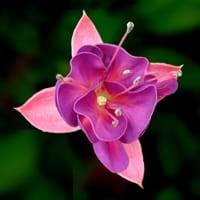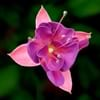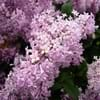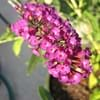Life Span
Perennial
Perennial
Type
Tender Perennial
Tree
Origin
Caribbean
Southwestern United States
Types
Fuchsia Decidua, Fuchsia Fulgens, Fuchsia Splendens, Fuchsia Microphylla
Prosopis chilensis, Prosopis juliflora
Habitat
Forest edges, Woods
Desert, Dry areas
USDA Hardiness Zone
9-10
6-9
Sunset Zone
16, 17, 23, 24
Not Available
Habit
Arching/Fountain-shaped
Arching/Fountain-shaped
Flower Color
Orange Red
Yellow
Flower Color Modifier
Not Available
Bicolor
Fruit Color
Not Available
Tan
Leaf Color in Spring
Purple, Dark Green
Blue Green
Leaf Color in Summer
Purple, Dark Green
Blue Green
Leaf Color in Fall
Purple, Dark Green
Blue Green
Leaf Color in Winter
Unknown
Not Available
Leaf Shape
Long Linear
Compound
Plant Season
Spring, Summer, Fall, Winter
Spring
Sunlight
Full Sun, Partial Sun, Partial shade
Full Sun
Type of Soil
Clay, Loam, Sand
Clay, Loam, Sand
The pH of Soil
Acidic, Neutral
Acidic, Neutral, Alkaline
Soil Drainage
Average
Well drained
Bloom Time
Indeterminate
Spring
Tolerances
Drought
Drought, Salt
Where to Plant?
Container, Ground, Pot
Ground
How to Plant?
Seedlings, Stem Planting, Transplanting
Grafting, Seedlings
Plant Maintenance
Medium
Medium
Watering Requirements
Requires regular watering
Keep ground moist
In Summer
Lots of watering
Ample Water
In Spring
Moderate
Moderate
In Winter
Average Water
Ample Water
Soil pH
Acidic, Neutral
Acidic, Neutral, Alkaline
Soil Type
Clay, Loam, Sand
Clay, Loam, Sand
Soil Drainage Capacity
Average
Well drained
Sun Exposure
Full Sun, Partial Sun, Partial shade
Full Sun
Pruning
Prune in spring, Prune lower leaves, Remove dead or diseased plant parts, Remove deadheads, Remove shoots
Prune in early spring, Remove all watersprouts, Remove dead leaves
Fertilizers
All-Purpose Liquid Fertilizer
Use nitrogen rich soil
Pests and Diseases
Rhizoctonia Root Rot, Rust
Armored scales, Candidula scale, Flatheaded borers, Mealybugs, Mesquite girdler, Mesquite scale, Oldman longhorn, Roundheaded borers, Stem gall rust
Plant Tolerance
Drought
Drought, Salt
Flower Petal Number
Single
Not Available
Fragrant Bark/Stem
No
Yes
Foliage Texture
Medium
Fine
Foliage Sheen
Matte
Matte
Attracts
Hummingbirds
Birds
Allergy
Asthma, Hay fever
Asthma, Rhinitis
Aesthetic Uses
Showy Purposes
Not Available
Beauty Benefits
Not Available
Improve hair condition
Environmental Uses
Air purification
Air purification
Medicinal Uses
Not Available
Conjuctivitis, Emetic, Eye Problems, Headache, Laxative, Pain in gums, Stomach aliments, Sunburn
Part of Plant Used
Flowers, Fruits
Inner Bark, Leaves, Sap
Other Uses
Not Available
Used as a dye, Used As Food, Used for its medicinal properties, Wood is used for making furniture
Used As Indoor Plant
Yes
No
Used As Outdoor Plant
Yes
Yes
Garden Design
Bedding Plant, Container, Feature Plant, Foundation, Hedges, Tropical
Shade Trees, Street Trees
Botanical Name
FUCHSIA triphylla
PROSOPIS glandulosa
Common Name
Fuchsia
Mesquite
In Hindi
फ्यूशिया
उत्तर पश्चिमी अमरीका का एक फलीदार पेड
In German
Fuchsie
Mesquite
In French
Fuchsia
Mesquite
In Spanish
Fucsia
mezquite
In Greek
φουξία
Είδος μιμόζας
In Portuguese
Fúcsia
Mesquite
In Polish
Fuksja
Mesquite
In Latin
Fuchsia
Mesquite
Phylum
Magnoliophyta
Magnoliophyta
Class
Dicotyledonae
Magnoliopsida
Family
Onagraceae
Fabaceae
Clade
Angiosperms, Eudicots, Rosids
Angiosperms, Eudicots, Rosids
Tribe
Not Available
Not Available
Subfamily
Not Available
Not Available
Number of Species
Not Available
Properties of Fuchsia and Mesquite Tree
Wondering what are the properties of Fuchsia and Mesquite Tree? We provide you with everything About Fuchsia and Mesquite Tree. Fuchsia doesn't have thorns and Mesquite Tree doesn't have thorns. Also Fuchsia does not have fragrant flowers. Fuchsia has allergic reactions like Asthma and Hay fever and Mesquite Tree has allergic reactions like Asthma and Hay fever. Compare all the properties and characteristics of these two plants. Find out which of these plant can be used as indoor plant. If you are interested to decorate your house and garden, find out aesthetic uses, compare them and select the plant which will beautify your surrounding. Along with beautification, try comparing medicinal and edible uses of Fuchsia and Mesquite Tree and you can choose the plant having best and most benefits.
Season and Care of Fuchsia and Mesquite Tree
Season and care of Fuchsia and Mesquite Tree is important to know. While considering everything about Fuchsia and Mesquite Tree Care, growing season is an essential factor. Fuchsia season is Spring, Summer, Fall and Winter and Mesquite Tree season is Spring, Summer, Fall and Winter. The type of soil for Fuchsia is Clay, Loam, Sand and for Mesquite Tree is Clay, Loam, Sand while the PH of soil for Fuchsia is Acidic, Neutral and for Mesquite Tree is Acidic, Neutral, Alkaline.
Fuchsia and Mesquite Tree Physical Information
Fuchsia and Mesquite Tree physical information is very important for comparison. Fuchsia height is 45.70 cm and width 45.70 cm whereas Mesquite Tree height is 760.00 cm and width 760.00 cm. The color specification of Fuchsia and Mesquite Tree are as follows:
Fuchsia flower color: Orange Red
Fuchsia leaf color: Purple and Dark Green
Mesquite Tree flower color: Yellow
- Mesquite Tree leaf color: Blue Green
Care of Fuchsia and Mesquite Tree
Care of Fuchsia and Mesquite Tree include pruning, fertilizers, watering etc. Fuchsia pruning is done Prune in spring, Prune lower leaves, Remove dead or diseased plant parts, Remove deadheads and Remove shoots and Mesquite Tree pruning is done Prune in early spring, Remove all watersprouts and Remove dead leaves. In summer Fuchsia needs Lots of watering and in winter, it needs Average Water. Whereas, in summer Mesquite Tree needs Ample Water and in winter, it needs Ample Water.





